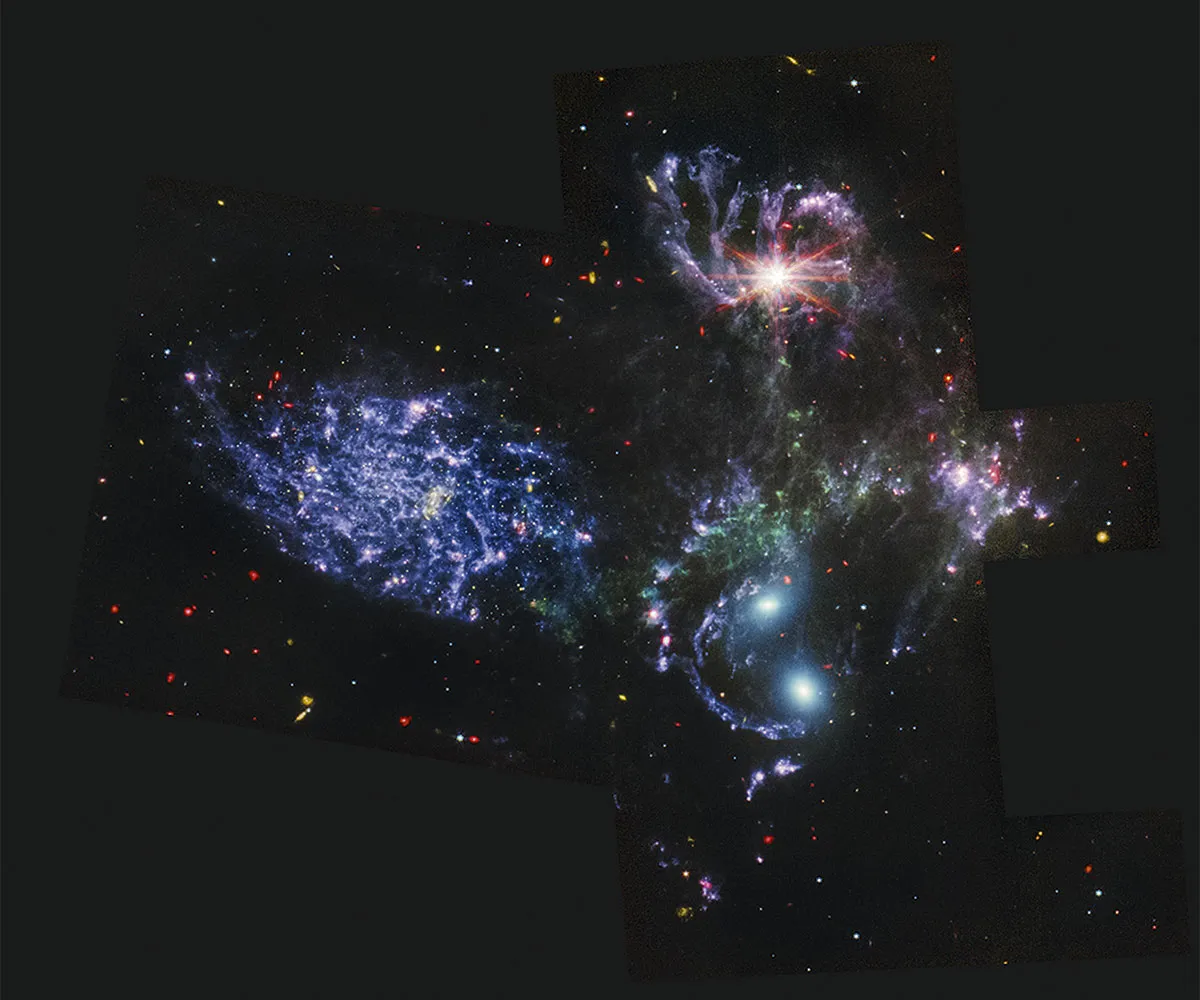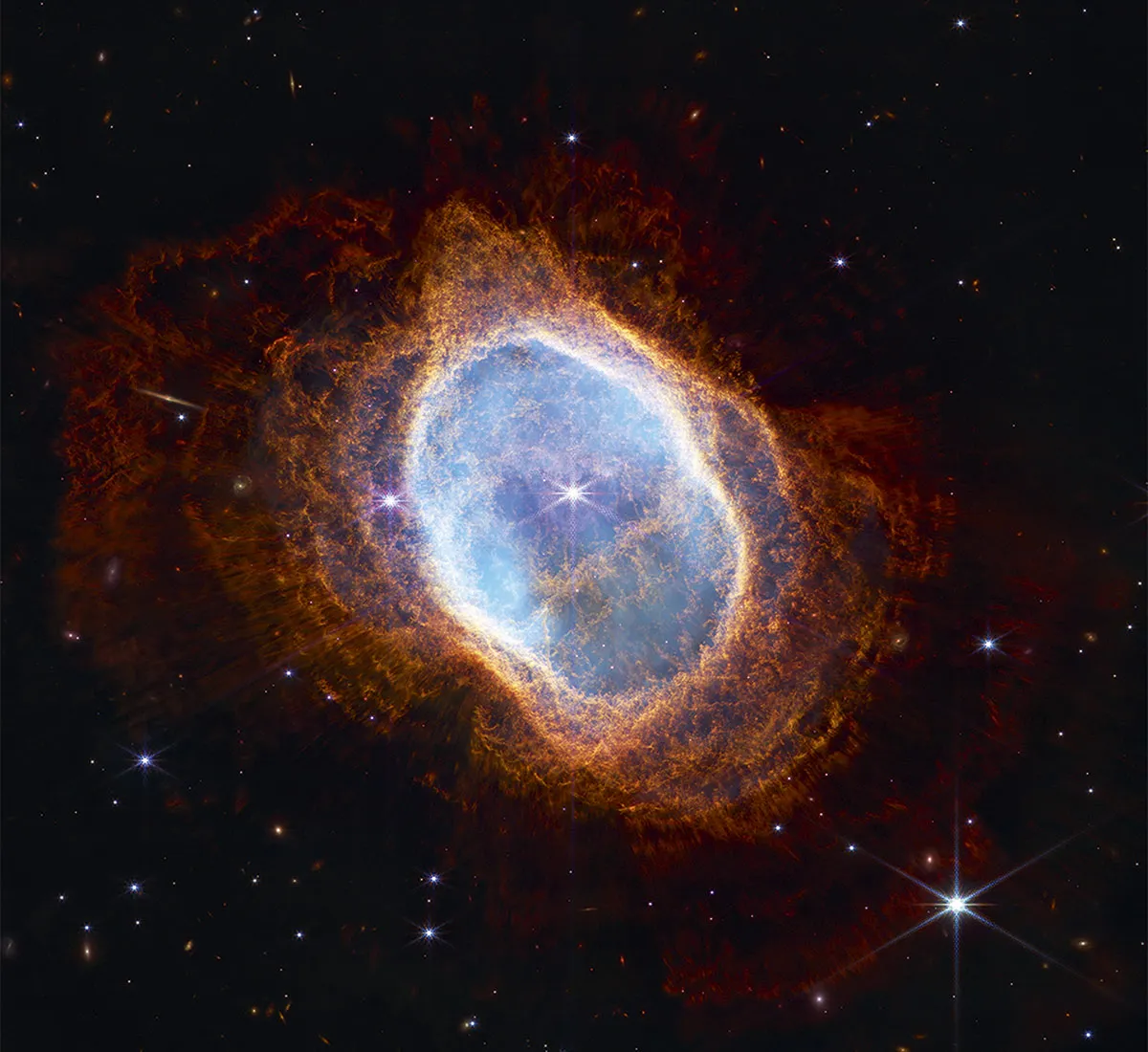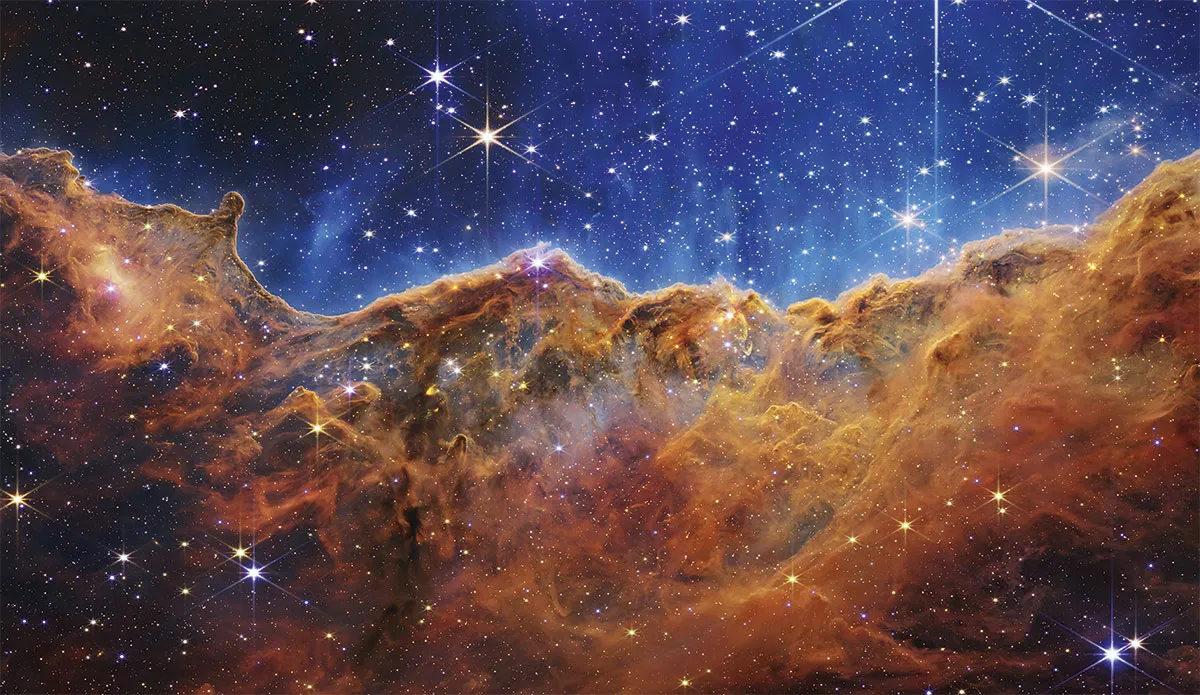On my phone is a slightly blurry photo of a distant, unnamed galaxy. It’s a little white smudge with spiral arms like sheep’s wool fluff – one galaxy among thousands of others in the James Webb Space Telescope’s (JWST) new breathtakingly detailed image of the distant cosmos – and I can’t stop staring at it.
There is nothing especially remarkable about this little white swirl; it’s not the largest or sharpest or most perfectly rendered or in any way most interesting galaxy in the image. But before JWST, no human had ever really seen it. I am seeing it now, fully and completely, and it is beautiful.
JWST is going to show us a lot of things we’ve never seen before. The selection of images (and one spectrum) in the telescope’s science image debut were chosen to showcase all the ways in which this project will fundamentally change our view and understanding of the Universe.
The first picture to be released, in a special presentation with US President Joe Biden on Monday night, brought us a giant galaxy cluster embedded in a skyscape scattered with enough distant background galaxies – including my own tiny spiral – to rival the deepest of the Hubble Deep Fields. What took Hubble a week and a half, JWST did “before breakfast”, according to Dr Jane Rigby, JWST’s operations project scientist.
JWST is about 100 times more sensitive than Hubble, owing to its giant mirror, sensitive cameras, and ability to capture the infrared light emitted by the Universe’s most distant objects.

The image depicts a sky teeming with bright eight-pointed stars (the points are artefacts of the light waves interacting with the telescope’s architecture) and galaxies in all shapes and sizes, along with odd smudges and arcs that seem to be encircling the central cluster.
Those curving smudges are the light from ordinary galaxies far in the distance, behind the cluster, distorted by its immense gravity. This effect, known as gravitational lensing, both stretches and magnifies the images of background objects, allowing the telescope to see things that would otherwise be both hidden and too dim to detect, extending its reach even further. This is the deepest and sharpest infrared image of the cosmos ever taken, and JWST barely broke a sweat.
As a cosmologist who studies the early Universe, I expected to be enthralled by the deep-field image. But it was just the preview. In a long press event on Tuesday morning, interspersed with vignettes to highlight as many as possible of the 20,000 people who helped make JWST a reality, the team presented spectral data of clouds and water vapour in the atmosphere of a planet orbiting a distant star and handed us three more mind-blowing images.
In what I suspect will be a trend with a telescope this powerful, each image contained some feature or detail that rendered it not just a sharper view of a known object, but a shift in our fundamental understanding.

Stephan’s Quintet is a group of four galaxies bound together by gravity, plus one foreground interloper. The four are slowly spiralling together, pulling out long streamers of stars and creating bursts of new star formation as the gas they contain collides.
By extending its view far beyond the range of visible light into the infrared, JWST is able to show us the tendrils of dust created by those bright-burning new stars, while simultaneously teasing out and analysing a streamer of hot gas flowing out from the vicinity of the supermassive black hole in the centre of one of the galaxies. With that extra data, we’re not just studying these individual galaxies; we’re learning about how galaxies and their black holes form and grow.

Closer to home, the Southern Ring Nebula is a bubble of fluorescing gas ejected by a dying star in its centre. In JWST’s near-infrared view, we see wispy shells and streams of gas and dust surrounding the glow of the hot gas, lit by a bright pinprick in its centre. But by also using mid-infrared light – longer wavelengths, capable of better penetrating the gas – JWST shows us that the pinprick is actually split in two, with one dot dimmer and redder than the other.
JWST can distinguish the two stars of the binary system, showing us which of them is the dying white dwarf star, shrouded in dust, and which is its brighter blue companion. Even in this image, distant background galaxies can be spotted in the darkness surrounding the nebula, one prominent edge-on disc galaxy rendered in enough detail for us to see its bright central core and dust lanes.
I didn’t expect to be affected by the final image, a section of a stellar nursery called the Carina Nebula. Nebulae are pretty, of course, but I’m a cosmologist. Give me the galaxies, the black holes, the warped space-time. Stars are commonplace. Our Galaxy is full of them. What is another dust cloud, when you have the entire cosmos stretching before you?
I was wrong, of course.

JWST’s view of the Carina Nebula is astounding. In a pre-release press conference, Pam Melroy, NASA deputy administrator and retired astronaut, said, “What I have seen just moved me, as a scientist, as an engineer, and as a human being.” I’m not certain which of the images she was referring to, but my money would be on the Carina Nebula.
It’s not just that it’s beautiful. In this image, we see dusty, gaseous tendrils being slowly carved away by the radiation of bright nearby stars, while within their depths protostars are just beginning to form. Where Hubble’s view showed us the edges of the clouds, JWST lets us peer within, to watch the process of creation as it happens, to see, like never before, how new light is born from the stuff of the stars.
We came from that. We are made of that. This is our cosmic origin story, viewed 8,000 light-years away, in another part of the Galaxy, but, nonetheless, entirely ours.
The images in this first data release were from JWST’s first week as a fully functioning science instrument. Soon, we should have new views of our Solar System. In a few weeks, we’ll have data from countless untouched corners of the cosmos. In a few years, I fully expect our understanding of stars and galaxies and the evolution of the Universe will be completely and irrevocably changed.
In the meantime, we all have a lot to process. The JWST team continues to schedule observations, download data, and maintain the engineering marvel that is this new and powerful machine. Observational astronomers around the world are analysing these first images to tease out new insights into their favourite astrophysical processes.
And I, a theorist whose professional life revolves around equations and lines of code, am still staring at that little fluffy galaxy, wondering if anyone living in it has seen the Universe as we humans have today, and if they know how beautiful their home looks from afar.
Read more about JWST: